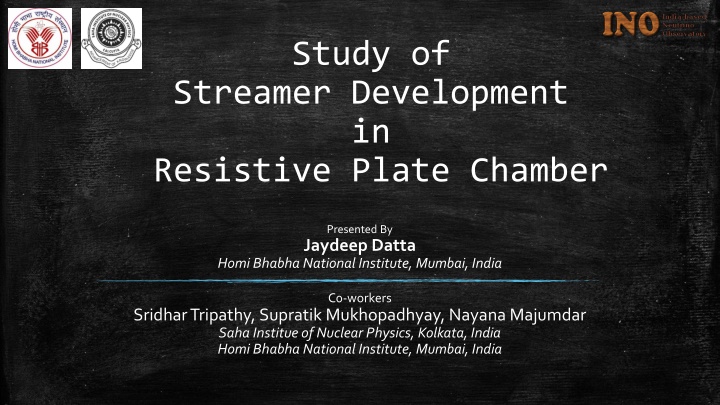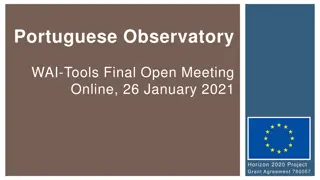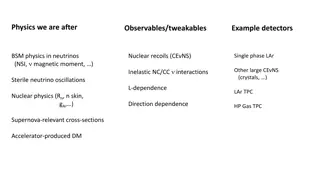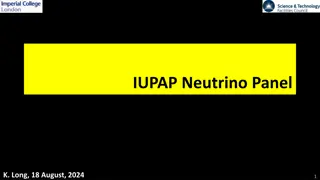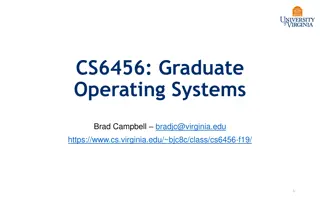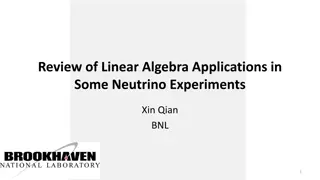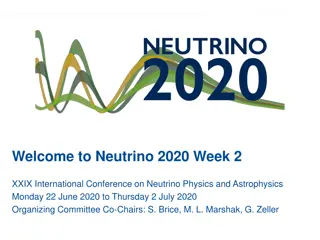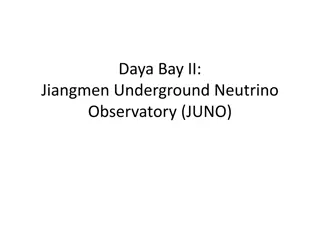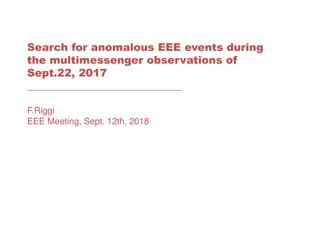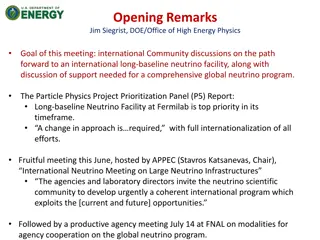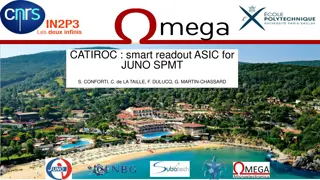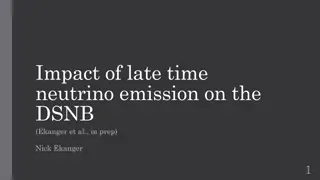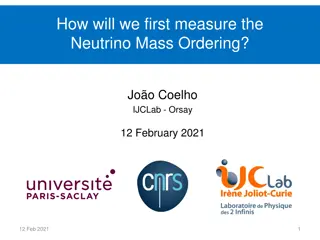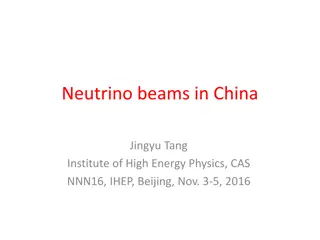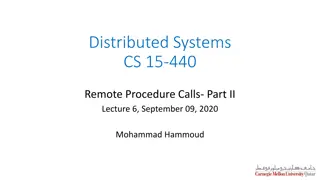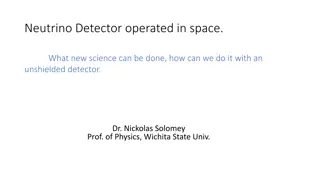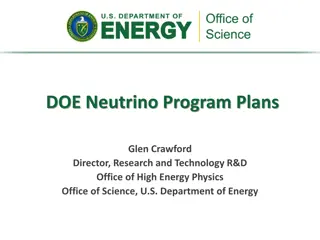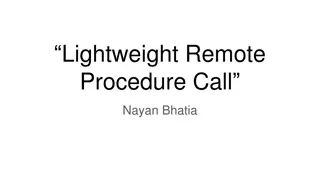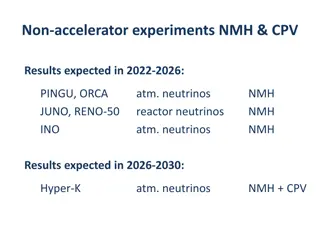Study of Streamer Development in RPC for Neutrino Observatory Experiment
India-Based Neutrino Observatory (INO) aims to study neutrino properties using experiments like ICAL with RPCs. This work focuses on simulating streamer probability in RPCs using eco-friendly gas mixtures to replace R134a. Various simulation tools are employed to model streamer behavior and primary electron interactions. The goal is to find a suitable substitute with high efficiency for the experiment's success.
Download Presentation

Please find below an Image/Link to download the presentation.
The content on the website is provided AS IS for your information and personal use only. It may not be sold, licensed, or shared on other websites without obtaining consent from the author.If you encounter any issues during the download, it is possible that the publisher has removed the file from their server.
You are allowed to download the files provided on this website for personal or commercial use, subject to the condition that they are used lawfully. All files are the property of their respective owners.
The content on the website is provided AS IS for your information and personal use only. It may not be sold, licensed, or shared on other websites without obtaining consent from the author.
E N D
Presentation Transcript
Study of Streamer Development in Resistive Plate Chamber Presented By Jaydeep Datta Homi Bhabha National Institute, Mumbai, India C0-workers Sridhar Tripathy, Supratik Mukhopadhyay, Nayana Majumdar Saha Institue of Nuclear Physics, Kolkata, India Homi Bhabha National Institute, Mumbai, India
Motivation India-Based Neutrino Observatory (INO) is an underground laboratory to study neutrino properties. One of the experiments to be housed in the facility is magnetized Iron Calorimeter (ICAL)consistsiron platesinterspersedwith ResistivePlateChambers (RPCs). To make sure that the RPCs are working in avalanche mode, a mixture of R134a, isobutane andSF6ina proportion95.5: 4.3: 0.2 isbeingused. The main component of the mixture, R134a, has a huge negative impact on the environment, which in turn motivates the search of an eco-friendly substitute of the mixture. The substitute mixture should also give good efficiency and less streamer probability to achieve the physicsgoal of the experiment. Mini-ICAL This work tries to establish a simulation framework to find out streamer probability of any gas mixture from the gas properties. RPC2020 14/02/2020 2
Outline of The Work We have considered a 2D model of RPC to simulate streamer. COMSOL Multiphysics, MAGBOLTZ and HEED are used for simulation. For simulation 94 GB RAM, 2.4 GHz*8 computational resource is used. The result of simulation is then compared with experimental data. The experiment is carried out using a glass RPC. The gas mixture used for the experiment and simulation is R134a : isobutane = 95 : 5. RPC2020 14/02/2020 3
Simulation Model We have used hydrodynamic model to study streamer in RPC. The basic idea was followed from the model described in RD51 NOTE-2011-005, by P. Fonte. For our work we have made some changes a) To match with RPC geometry instead of a 2D axisymmetric geometry, we have built a 2D model. b) We have used anisotropic diffusion coefficient. c) For ions we have incorporated convection also. d) We have incorporated two stop conditions. 1. The first stop condition is, when the number of electron in the geometry is less than one. 2. The simulation stops when the electron density reaches 10-4 (mol/m^3)at the cathode. RPC2020 14/02/2020 4
Simulation Model Initial Voltage Distribution Model Mesh Model Geometry RPC2020 14/02/2020 5
Information of Primary Electrons and Gas Properties To have an idea of the streamer probability we have used information about primary electron number and their positions from HEED. For the above, we have generated muon with energy between 1 GeV to 10 GeV following a energy dependent flux (E-2.7 ). Mostly vertical muons are chosen to find the number of primaries. MAGBOLTZ is used to find the electron transport properties in the gas for different electric field. RPC2020 14/02/2020 6
Inclusion of Primary Electrons Number of Primary Electrons Mean Z Position of Electrons Initial Electron Distribution No. of electrons = 10 x = 0.01 mm, y = 0.1 mm RPC2020 14/02/2020 7
Experimental Procedure We have used a 30 cm x 30 cm glass RPC. Coincidence of three scintillator signals are used as muon trigger. We have made spatial coincidence of the scintillators with one of the RPC strip. Data acquisition has been done for the coincident strip and one strip from either side of it, using oscilloscope and python based code on a computer. Data analysis has been done offline using ROOT and C++ based code. RPC2020 14/02/2020 8
Streamer Probability Calculation In simulation, use different number of primaries for each voltage. Find out streamer occurs or not, which is defined by the situation that the electrons have reached the cathode. Find out the probability of occurrence of that number of electrons from the HEED primary electron information. Add up the probabilities. For experiment, first find out whether more than one pulse has come or not, if yes then whether the amount of charge is more than 20 pC or not, which is equivalent to Raether Limit. Streamer simulated Streamer signal from experiment RPC2020 14/02/2020 9
Result The following table compares the streamer probability from simulation and experiment. Voltage (in V) Streamer Probability from Experiment Streamer Probability From simulation 9400 0.00087 +/- 0.00011 0.008 9600 0.00091 +/- 0.00015 0.008 9800 0.00411 +/- 0.00181 0.0135 10000 0.02681 +/- 0.00052 0.0224 Sources of error in simulation: 1. The relative tolerance was set to 0.01. 2. The initial position of the electron distribution was taken at the middle of the whole gap. But there is a distribution of that. So error due to the initial position will affect the result. 3. While calculating the streamer probability we have divided the number of events which will give streamer by the total number of events simulated in HEED. So fluctuation in that will also add up in the error. RPC2020 14/02/2020 10
Conclusion The streamer probability from simulation and experiment follows same trend. We may have over estimated some parameters in simulation. We need more data to support the experiment. RPC2020 14/02/2020 11
Acknowledgement I like to thank the organizers for giving me the opportunity to present my work here. I like to express my gratitude towards INO collaboration for helping me throughout the work. I thank my lab-mates and ANP division of Saha Institute of Nuclear Physics for their help. RPC2020 14/02/2020 12
Thanks RPC2020 14/02/2020 13
Magboltz plots RPC2020 14/02/2020 14
